This EduRev document offers 20 Multiple Choice Questions (MCQs) from the topic Number System (Level - 3). These questions are of Level - 3 difficulty and will assist you in the preparation of CAT & other MBA exams. You can practice/attempt these CAT Multiple Choice Questions (MCQs) and check the explanations for a better understanding of the topic.
Question for Practice Questions Level 3: Data Sufficiency - 2
Try yourself:Directions: In this problem, a question is followed by three statements numbered (I), (II), and (III). Read the statements carefully and determine which of them is/are sufficient/necessary to answer the question.
Ten persons are sitting in two parallel rows. U, V, W, X and Y are sitting in the same row facing south, and M, N, O, P and Q are sitting in the other row facing north. Each person is facing a person in the other row. Two persons are sitting between Y and V. M is third to the left of N.
Q. Who is facing Q?
I. U is diagonally opposite to O. X is to the immediate right of V.
II. Y is not sitting at either of the extreme ends of his row. P is facing Y.
III. X is third to the left of U, who is facing the immediate neighbour of P.
Explanation
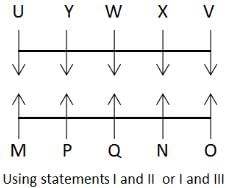
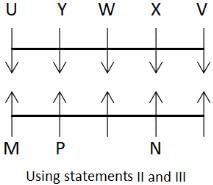
Statement I and either statement II or statement III are sufficient.
Report a problem
Question for Practice Questions Level 3: Data Sufficiency - 2
Try yourself:Directions: In this problem, a question is followed by three statements numbered (I), (II), and (III). Read the statements carefully and determine which of them is/are sufficient/necessary to answer the question.
M, N, O, P, Q, R and S are seven members of a family. There are two married couples in the family. Q is married. M is the father-in-law of R. M has two children and two grandsons.
Q. How is Q related to N?
I. P is the sister-in-law of S.
II. Q is the uncle of O, who is the son of P.
III. Q is the brother-in-law of R, who has no nephew.
Explanation


Statements I and III are sufficient to answer the question.
Report a problem
Question for Practice Questions Level 3: Data Sufficiency - 2
Try yourself:Directions: The following problem consists of a question and three statements (I), (II) and (III) given below it. You have to find out which of the statements is/are redundant for determining the answer to the given question or can be dispensed with.
A, B, C, D, E, F, G and H are sitting around a circular table at equal distances facing centre. C is third to the left of A, but he is not the immediate neighbour of E.
Q. Who is sitting to the immediate right of A?
I. G is third to the left of C.
II. B and H are sitting opposite each other.
III. G is sitting immediate to the right of E.
Explanation
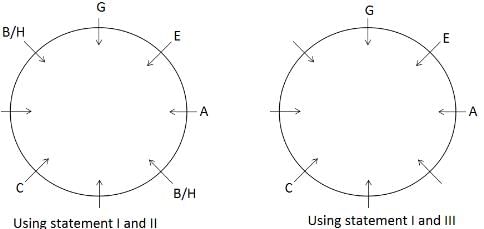
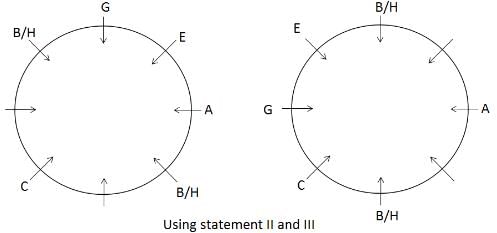
Using statement I and either II or III, we can find who is sitting to the immediate right of A.
It means statements III or II are redundant.
Report a problem
Question for Practice Questions Level 3: Data Sufficiency - 2
Try yourself:Directions: The question given below is followed by three statements numbered I, II and III. Read all the statements carefully and decide which of them is/are sufficient to answer the given question. Choose the correct alternative accordingly.
A has some blue and red balls with him in the ratio of 3 : 4.
Q. How many red balls does A have?
I. If the red balls had been twice their actual number, the ratio would have been 3 : 8.
II. If A gets 5 more red and blue balls each, the ratio of blue to red balls will become 4 : 5.
III. If A gets 3 more blue balls, then the ratio of blue to red balls will become 9 : 10.
Explanation
Let the numbers of blue and red balls be 3x and 4x, respectively.
As per statement I:
If the red balls had been twice their actual number, the ratio would have been 3 : 8, which is clear from the question itself.
As per statement II:
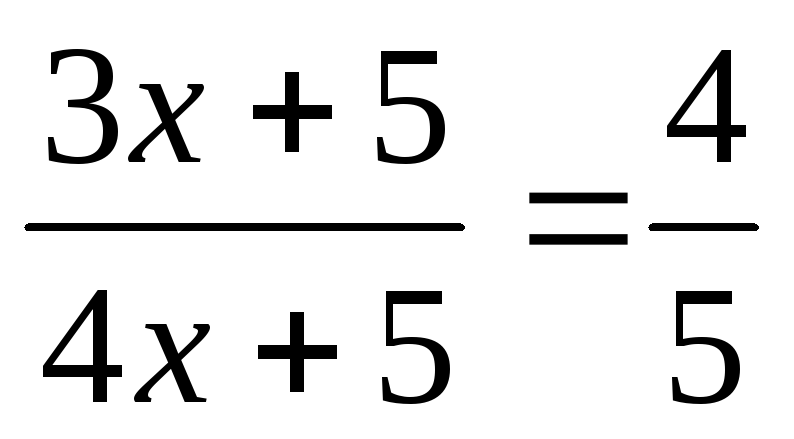
On solving, we can find x and hence, the number of red balls.
As per statement III:
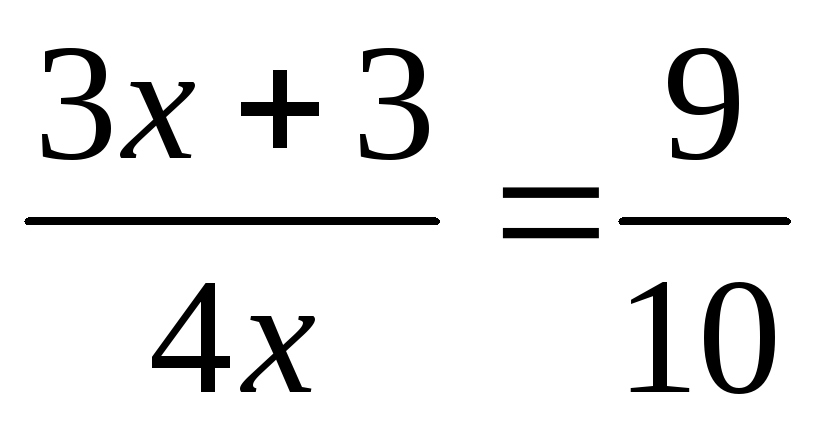
On solving, we can find x and hence, the number of red balls.
Report a problem
Question for Practice Questions Level 3: Data Sufficiency - 2
Try yourself:Directions: In the following problem, a question followed by three statements (I), (II) and (III) is given. You have to determine which statement(s) is/are sufficient/necessary to answer the question.
M, N, O, P, Q, R, S and T are sitting around a square table such that four of them are sitting at the corners and four are sitting in the middle of each side of the table facing centre. T is sitting at the corner and Q is not sitting at the corner.
Q. Who is sitting opposite R?
I. Q is second to the right of N. R is third to the left of T.
II. R is not sitting opposite Q. O is the immediate neighbour of R and S.
III. O is third to the left of N. M is third to the left of S, who is not sitting at the corner.
Explanation
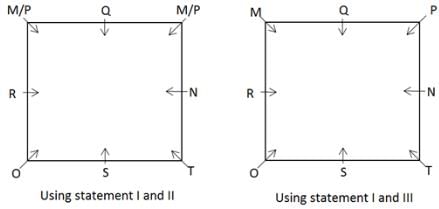

Question can be answered using statement I and either II or III.
Report a problem
Question for Practice Questions Level 3: Data Sufficiency - 2
Try yourself:Directions: The question given below is followed by three statements numbered I, II and III. Read all the statements carefully and decide which of them is/are sufficient to answer the given question. Choose the correct alternative accordingly.
Q. What is the probability of picking 1 red and 1 white ball from a bag containing balls of three colours without replacement?
I. The bag contains red, white and blue balls in the ratio 3 : 5 : 7.
II. The bag contains 75 balls.
III. The number of red balls in the bag is 40% less than number of white balls.
Explanation
As per statement I, it is clear that the bag contains a total of 15x balls containing 3x red balls, 5x white balls and 7x blue balls, where x is not given.
As per statement II, the bag contains 75 balls.
As per statement III, the number of red balls is 0.6 times the number of white balls.
Using statement I and II,
15x = 75
x = 5
Number of red balls = 15
Number of white balls = 25
Number of red balls = 35
Probability of picking 1 red and 1 white ball =  =
= 
Using statement I and III, we didn't find the number of balls of different colors.
Using statement II and III, we didn't find the number of balls of different colors.
So, option 4 is correct.
Report a problem
Question for Practice Questions Level 3: Data Sufficiency - 2
Try yourself:Directions: In the following problem, a question followed by three statements (I), (II) and (III) is given. You have to determine which statement(s) is/are sufficient/necessary to answer the question.
E, F, G, H, P, Q, R and S are sitting on a rectangular table such that four of them are sitting on one side of the table and each person is facing one person sitting on the opposite side of the table. E, F, G and H are facing South and P, Q, R and S are facing North. G and S are not at the corners.
Q.Who is facing G?
I. G is facing the person sitting second to the left of Q, who is not facing F.
II. H is facing the person sitting second to the right of R, who is not facing G.
III. E and R are sitting diagonally opposite to each other. H is facing S.
Explanation



Using statements I and III, question can be answered.
Report a problem
Question for Practice Questions Level 3: Data Sufficiency - 2
Try yourself:Directions: The question given below is followed by three statements numbered I, II and III. Read all the statements carefully and decide which of them is/are sufficient to answer the given question. Choose the correct alternative accordingly.
Q. What is the value of x + 2y?
I. If both x and y are decreased by 50%, the value of x + y will be decreased by 30.
II. y is 50% more than x.
III. x + 3y = 132
Explanation
As per statement I, 50% of x + y is equal to 30.
i.e. x + y = 60
So, we cannot find the value of x + 2y.
Hence, statement I alone is not sufficient.
As per statement II, y = 1.5x
But without finding any one value out of x and y, we cannot find the other value; so statement II alone is also not sufficient.
As per statement III, x + 3y = 132
But we cannot find the value of x + 2y without knowing the value of y.
So, statement III alone is also not sufficient.
To find the value of x + 2y, we need to find the values of x and y; which we can find by using any two of the given three statements.
So, option 4 is correct.
Report a problem
Question for Practice Questions Level 3: Data Sufficiency - 2
Try yourself:Directions: In the following problem, a question followed by three statements (I), (II) and (III) is given. You have to determine which statement(s) is/are sufficient/necessary to answer the question.
T, U, V, W, X, Y and Z are sitting in a row. Some of them are facing South and some are facing North. U is exactly in the middle of the row.
Q. Who is sitting third from the West end?
I. W is second to the left of U. T is sitting at the West end.
II. Z is the immediate neighbour of V and X. Persons sitting at both the ends are facing North.
III. Three persons are sitting between W and Z. V is second to the left of X, who is sitting at one of the ends.
Explanation
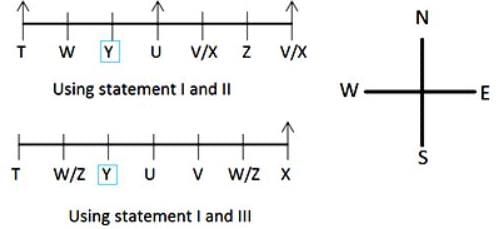
Using statement I with either II or III
Report a problem
Question for Practice Questions Level 3: Data Sufficiency - 2
Try yourself:Directions: The question given below is followed by three statements numbered I, II and III. Read all the statements carefully and decide which of them is/are sufficient to answer the given question. Choose the correct alternative accordingly.
Q. How many students got more than 80% marks in the exam?
I. 5000 students appeared for the exam.
II. Of the students who appeared, 34% secured less than 80% marks in the exam.
III. The number of students who got more than 80% marks in the exam is double the number of students who got 80% marks in the exam.
Explanation
It is clear from statement I that 5000 students appeared for the exam, but no information is given as to how many students got more than 80% marks; so statement I alone is not sufficient.
It is clear from statement II that out of the students who appeared, 34% secured less than 80% marks in the exam, but still no information is given as to how many students got more than 80% marks; so statement II alone is not sufficient.
As per statement III, the number of students who got more than 80% marks in the exam is double the number of students who got 80% marks in the exam. So, using statements II and III, we can conclude that 44% students got more than 80% marks in the exam; but by using all three statements, we can conclude that 2200 students got more than 80% marks in the exam. So, option 3 is correct.
Report a problem
Question for Practice Questions Level 3: Data Sufficiency - 2
Try yourself:Directions: In the following problem, a question followed by three statements (I), (II) and (III) is given. You have to determine which statement(s) is/are sufficient/necessary to answer the question.
There are seven members in a family. The members are A, B, C, D, Q, R and S. There are three couples in the family. R has one son and one daughter only.
Q. How is R related to D?
I. A is the father-in-law of S. S and D are sisters-in-law.
II. C is the father of B. A is married, but not to B.
III. Q is the uncle of B.
Explanation
Using statement I and either II or III, we get the relations mentioned in the diagram. Using statements II and III, we do not get exact relations with anyone. Relation of R and D is clear in the diagram.

Report a problem
Question for Practice Questions Level 3: Data Sufficiency - 2
Try yourself:Directions: In this question, you have to decide which of the statements I, II and III is/are required for determining the answer to the given question.
Q. What is the probability that the person who met with an accident is a car driver?
I. An Oriental Insurance company insured 4000 car drivers, 8000 bike drivers and 12,000 auto drivers.
II. The probabilities of a car driver, bike driver and auto driver meeting an accident are 0.01, 0.03 and 0.15, respectively
III. The probability of a car driver meeting an accident is one-third of the probability of a bike driver meeting an accident.
Explanation
Report a problem
Question for Practice Questions Level 3: Data Sufficiency - 2
Try yourself:Directions: In the following problem, a question followed by three statements (I), (II) and (III) is given. You have to determine which statement(s) is/are sufficient/necessary to answer the question.
Eight friends E, F, G, H, I, J, K and L have different weights. E is heavier and H is lighter than five of them.
Q. If they are made to stand according to their weights, which two will be in the middle?
I. I is lighter than E, but heavier than H. L is heavier than G.
II. J is heavier than K only. F is not heavier than E.
III. F is lighter than G, who is not lighter than E.
Explanation

Using statements I and II we get that I and F will be in the middle.
Report a problem
Question for Practice Questions Level 3: Data Sufficiency - 2
Try yourself:Directions: The following question is accompanied by statements A, B and C. You have to determine the statement(s) which is/are sufficient to answer the question.
Q. Is k5 + l4 + m3 + n2 > 0?
A. l + n = 0
B. l + m + n > 0
C. m + k > 0
Explanation
We need to check if k5 + l4 + m3 + n2 > 0 or not.
Numbers having even powers are always positive.
So, l4 and n2 will always be positive, irrespective of values of l and n.
Now, the whole term being negative or positive depends on whether k5 + m3 is positive or negative and the values of m and k.
Since k is the term with the highest power, it will dominate the expression k5 + l4 + m3 + n2 and for highly negative value, the expression will be always negative even if l, m and n are positive.
Now, even if we use statements A, B and C, m is greater than (-k).
For m = 5, k = -3, l = 2 and n = -2
The value k5 + l4 + m3 + n2 < 0
So, even all the three statements together are not sufficient.
Report a problem
Question for Practice Questions Level 3: Data Sufficiency - 2
Try yourself:Directions: The following question is accompanied by three statements (I), (II) and (III). You have to determine which statements are sufficient/necessary to answer the question.
In a 5 day cultural festival at a university, M, N, O, P and Q appeared as chief guests on different days from Monday to Friday but not necessarily in the same order. They are from different countries, i.e Taiwan, Spain, India, Jordan and Brazil. M visited on Thursday and person from Jordan visited on Tuesday.
Q. Who visited the cultural festival on Monday?
I. N visited on the next day to the day when person from Brazil visited. Q did not visit on the first day or the last day.
II. P did not visit before N. P is from India.
III. Q is from Taiwan. O visited a day before N.
Explanation


Statements I and either II or III are sufficient.
Report a problem
Question for Practice Questions Level 3: Data Sufficiency - 2
Try yourself:Directions: The following question is accompanied by statements A, B and C. You have to determine the statement(s) which is/are sufficient to answer the question.
Q. What is the length of the inradius of triangle ABC?
A. All the sides of triangle ABC are equal.
B. The area of triangle ABC is known.
C. The perimeter of triangle ABC is known.
Explanation
Report a problem
Question for Practice Questions Level 3: Data Sufficiency - 2
Try yourself:Directions: In this problem, a question is followed by three statements numbered (I), (II), and (III). Read the statements carefully and determine which of them is/are sufficient/necessary to answer the question.
A, B, C, D, E, F and G live on different floors of a seven-storey building, whose ground floor is numbered as the first floor and top floor is numbered as the seventh floor. B lives on the sixth floor. F lives on an odd-numbered floor.
Q. On which floor does C live?
I. A lives on the floor which is three floors above the floor of E, who lives on an odd-numbered floor.
II. F does not live on any of the floors above the floor of D, who is not living at the top floor.
III. F lives on the floor immediately above the floor of C.
Explanation
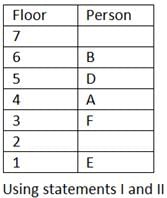
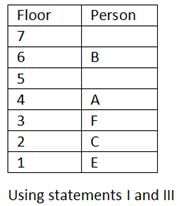
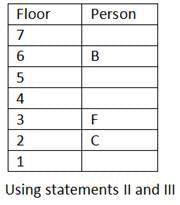
Statement III and either statement I or statement II are sufficient to answer the question.
Report a problem
Question for Practice Questions Level 3: Data Sufficiency - 2
Try yourself:Directions: The following question is accompanied by statements A, B and C. You have to determine which statement(s) is/are sufficient to answer the question.
Q. If product of two positive numbers m and n is 80, then what are the values of m and n, respectively?
A. m is 25% more than n.
B. n + 2m : n + m = 14 : 9
C. m + n = 18
Explanation
Statement A alone is sufficient as product of m and n is already given in question.
Using statement A, we find m = 1.25n, through which we can find individual values of m and n.
Similarly, we can find the values of m and n, respectively from statement B also.
By using statement C alone, we can form a quadratic equation as both sum and product of m and n is given, but cannot find their respective values as we do not know whether m is greater than n or vice versa.
Report a problem
Question for Practice Questions Level 3: Data Sufficiency - 2
Try yourself:Directions: The following question is accompanied by statements A, B and C. You have to determine which statement(s) is/are sufficient to answer the question.
Q. What is the average number of balls in boxes A, B and C?
A. If 5 balls are drawn each from boxes A, B and C, then the average number of balls in the three boxes is 15.
B. If 25 balls are added to each of the boxes A, B and C, the average number of balls in the three boxes becomes 35.
C. Box A has 25 balls, which has 15 balls more than the average number of balls of boxes B and C.
Explanation
Using statement A, we can find the average number of balls in boxes A, B and C, respectively as we are given the value of average when 5 balls were drawn from each of the boxes. So, by simply adding five to that value, we can find the average number of balls in boxes A, B and C. Similarly, we can also find the average number of balls in boxes A, B and C using statement B. Using statement C, we can find the number of balls in box A and by using relationship between number of balls in box A and total number of balls in boxes B and C, we can find the total number of balls in three boxes and hence, their average.
Report a problem
Question for Practice Questions Level 3: Data Sufficiency - 2
Try yourself:Directions: In this problem, a question is followed by statements marked (I), (II) and (III). Read the statements carefully and determine which of the given statements is/are sufficient/necessary to answer the question.
Q. How much time does Aksh take to cover 30 km?
I. Aksh takes 2 hours more than Ankush does to cover 30 km.
II. Ratio of speeds of Aksh and Ankush is 2 : 3.
III. If Aksh doubles his speed, then Ankush takes 1 hour more than him to cover 30 km.
Explanation
Report a problem


















 ; P(B) =
; P(B) = 


































